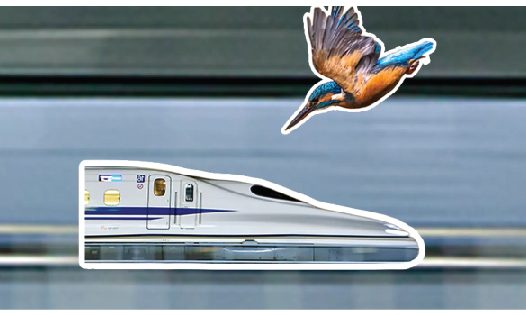
Article by
In the vast landscape of innovative engineering, the Japanese bullet trains stand as marvels of modern transportation. However, the tale of their evolution involves more than just mechanical prowess; it is a story of nature's subtle influence, particularly that of the agile kingfisher.
The Tokaido Shinkansen, one of the world's busiest high-speed rail lines, initially faced a significant predicament—tunnel sonic booms. As the trains sped through tunnels, atmospheric pressure waves built up, causing disruptive sonic booms upon exit. The disturbances, audible up to 1300 feet away, troubled thousands of nearby residents.
In 1997, Eiji Nakatsu, the director of technical development for bullet trains, embarked on a mission to address this issue without compromising speed or increasing energy consumption. Inspired by his dual role as an engineer and avid birdwatcher, Nakatsu turned to nature for a solution.
Observing kingfishers, Nakatsu marveled at their ability to dive from the air into water at high speeds without making a splash. He attributed this feat to the streamlined shape of their pointed, wedge-shaped beaks. Intrigued, Nakatsu and his team conducted tests to measure pressure waves, discovering that the ideal shape for the Shinkansen's head closely mirrored that of a kingfisher's beak.
This revelation marked a turning point. The redesigned Shinkansen not only minimized the noise of tunnel sonic booms but also operated at higher speeds while maintaining standard noise levels. Beyond noise reduction, the new Shinkansen 500 series exhibited improved energy efficiency, consuming 30% less energy due to decreased air resistance.
The impact of this innovation extended beyond noise reduction and energy efficiency. The Shinkansen 500 series achieved speeds of up to 187 miles per hour, reducing travel time between Shin-Osaka and Hakata by a significant 15 minutes.
Nature, it seems, held the key to a challenge that had perplexed engineers for years. The kingfisher-inspired design not only improved the daily lives of thousands but also showcased the potential synergy between human engineering and the natural world. This story serves as a reminder that providing solutions to our complex problems may already exist, awaiting our recognition and understanding in the world around us. The whispers of nature have the power to reshape our technological landscapes for a more harmonious future.
The evolution of the Shinkansen 500 series stands as a testament to the untapped wealth of solutions that nature provides for our man-made challenges. Beyond the technical achievements, Nakatsu's story underscores the importance of interdisciplinary inspiration—how a birdwatcher's observations of a kingfisher could revolutionize high-speed rail travel.
The transformative impact of nature-inspired engineering reached far beyond Japan's borders. It became a beacon for environmentally conscious design, influencing discussions on sustainable transportation globally. As we gaze into the future of innovation, Nakatsu's story prompts us to consider the vast potential of our natural surroundings as a source of inspiration and problem-solving.
In the intricate dance between technology and the environment, we find that solutions may not always demand elaborate complexity. Sometimes, the elegant simplicity of nature's designs holds the key to unlocking new frontiers in human achievement. Nakatsu's journey invites us to embrace the wisdom of the natural world and invites reflection on how many more challenges might find resolution in the delicate yet powerful balance that nature offers.
The kingfisher's contribution to the evolution of bullet trains is a captivating chapter in the ongoing dialogue between human ingenuity and the world we inhabit. As we continue to advance, let us remain open to the whispers of nature, for within them may lie the solutions to our most pressing challenges, waiting to be discovered and embraced. The story of the kingfisher and the Shinkansen is a reminder that our journey toward progress is intertwined with the ecosystems that surround us, offering lessons that stretch beyond the realm of engineering and into the very heart of sustainable innovation.
 Monthly "Azeem English Magazine", launched in 2000, records the information about diverse fields like mental health, literature, research, science, and art. The magazine's objective is to impart social, cultural, and literary values to society.
Monthly "Azeem English Magazine", launched in 2000, records the information about diverse fields like mental health, literature, research, science, and art. The magazine's objective is to impart social, cultural, and literary values to society.
+92 51 88 93 092
First Floor, RAS Arcade, Eidhi Market, Street#124, G-13/4, Islamabad, Pakistan, 44000.